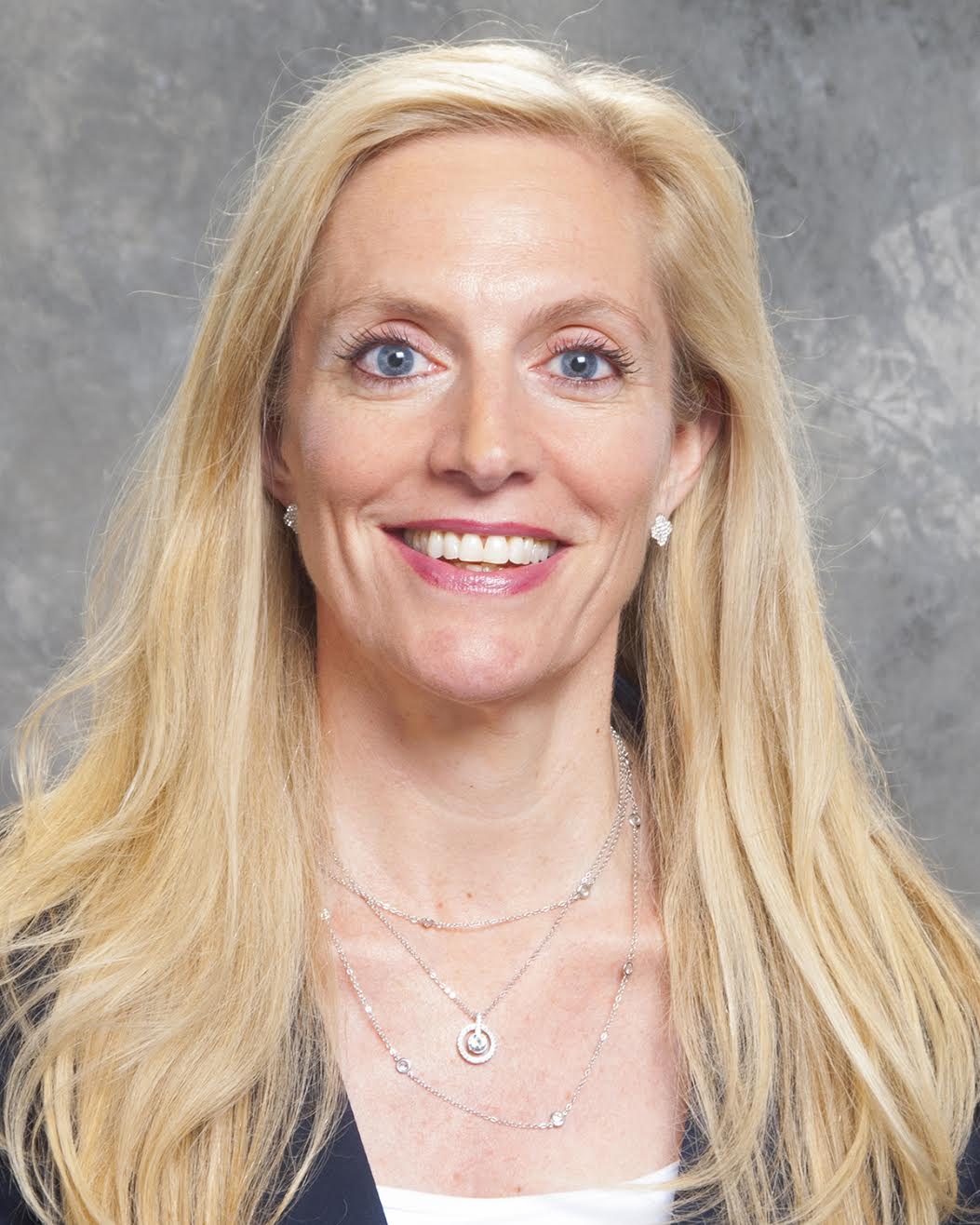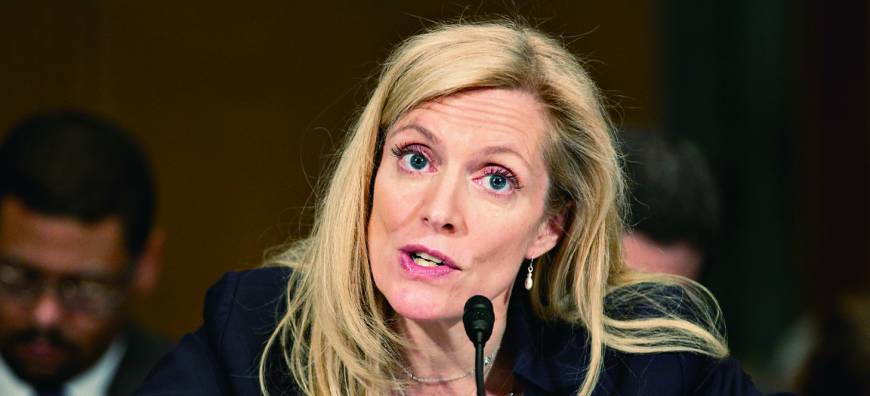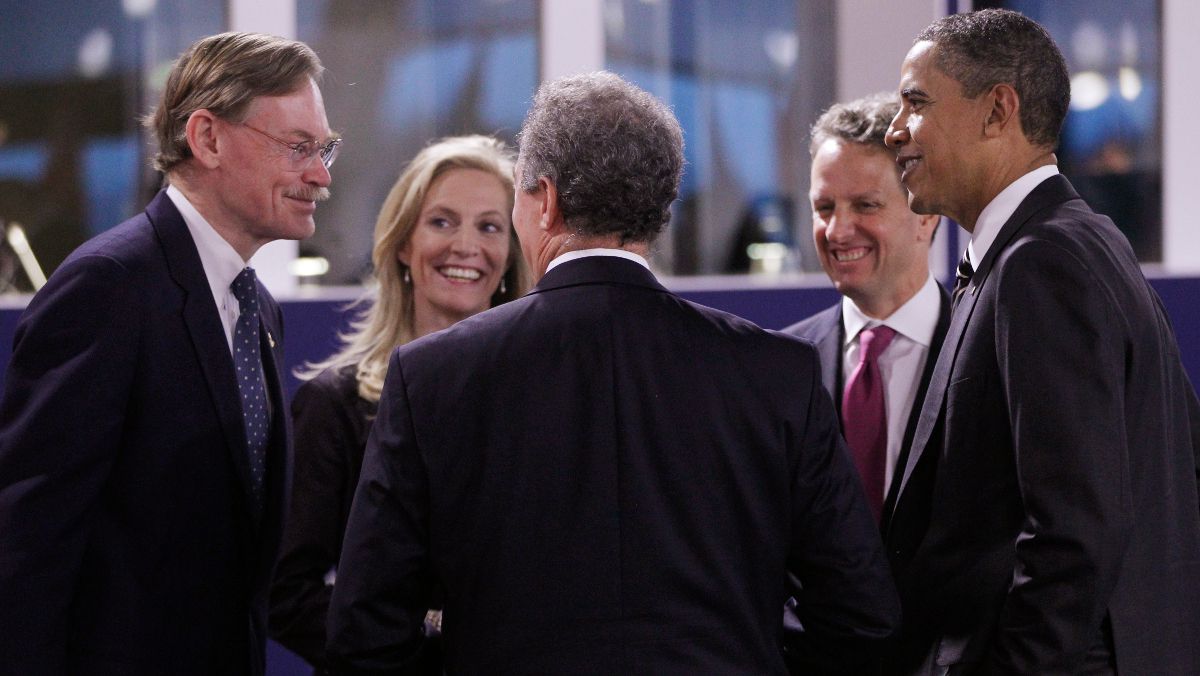The true test of whether or not your job is vital to the sustenance of the national economy is if you come home in a bad mood after a day of work and your kids ask if interest rates are bothering you. Dr. Lael Brainard ’83 finds time to help determine the country’s optimal monetary policy, ameliorate employment hierarchies that skew away from underrepresented groups, and most importantly, cheer on her three daughters.

The decorated alumna is currently serving as a member of the United States Federal Reserve’s Board of Governors. She last worked under President Barack Obama as Undersecretary of the U.S. Department of Treasury from 2010 to 2013 and Counselor to the Secretary of the Treasury in 2009.
“I am very mission-driven and I really care about economic opportunity, America’s role in the world, and this role as a force for good,” said Dr. Brainard. “The extent to which our country displays the true ‘American Dream’ is being supported by policies, that people should not be held back by where they were born, or what schools are in their neighborhood, or how much wealth their parents had, or whether their parents were immigrants, or the color of their skin. I am cognizant that the field that I chose when I chose it was very male-dominated. As I’ve progressed in my career I have tried to create more diverse opportunities for others at senior levels, from a gender, ethnic, and racial perspective. I want to give back and help younger people make their way in this arena.”
Dr. Brainard discussed her career and what days are like as a member of the U.S. Federal Reserve’s Board of Governors.
“There is really no average day,” said Dr. Brainard. “On a day that we have an FOMC meeting, or a scheduled Federal Open Market Committee meeting, where we determine monetary policy, generally we all start the day in the very large, historical boardroom, which has a big map of the Federal Reserve Districts on the wall. Each of us sits in a designated seat, the board members each have their names printed on the backs of the chairs, and it is extremely formal. Every word we say is transcribed and will be released five years after the date of the meeting. People are a bit cautious in terms of the observations that they make.”
“We start the meetings with people from the Federal Reserve Bank of New York telling us what the financial markets look like and then we hear about the economy, and then we go around and talk about our own views of the economy,” she said. “Generally, the Chair summarizes and the setting for the monetary policy discussion usually follows. During that portion of the meeting, we go around the table and talk about what we think is the right course for monetary policy and the right setting for interest rates. At the end of this period, we all vote very formally, and then the result is released to the public.”
Joining the Fed has forced Dr. Brainard to be much more selective with her word choice, especially in the public sphere.
“That definitely has a way of making us much more cautious about what we say in the public arena,” she said. “We recognize that financial markets are extremely sensitive to news of any sort on the policy front. It does make us need to calibrate our words very, very carefully. With regard to how they might be heard, and what kind of conclusions investors might be drawing about the future of the economy, it is incumbent on us to be as transparent as we possibly we can. This is so the public understands the factors that are influencing each of our individual thought processes as we think about the appropriate calibration of monetary policy.”
Dr. Brainard explained that being stuck inside of a boardroom is not the only part of her job description. Another is traveling to help bona fide people in sticky situations.
“Another kind of day is where I go out to a part of the country where our community development staff is working with local institutions and local community development organizations to try to improve economic development and access to financial services for capital for small businesses, underserved communities, and communities that don’t traditionally receive the help they need,” she said. “I went to El Paso, to a border area, with our staff from the El Paso branch of the Dallas Fed.”
“We spent the day talking to families who were struggling to be able to secure mortgages on their land, and who generally have pretty challenging living conditions, based on their earned income,” she said. “It was a rewarding day that resulted in a new house being made available on an affordable basis to a single mother who was struggling with cancer and living in a trailer with rusted out floors and no air conditioning. There are days when I am out and about, trying to understand how Americans of all different types are experiencing the economy in a very granular way.”
The way Dr. Brainard views the economy is shaped by her childhood experiences, which are not typical in the slightest.
“I lived overseas for my entire childhood both in Communist Poland and Germany before reunification,” she said. “From that experience, I took away two things. One, the power of economic dynamism, markets in propelling forward economies, and using people’s great ideas to improve the quality of our lives and build better futures for us. In the Poland I saw as a young child, individual initiative was stymied at every turn. There were very high rates of suicide and alcoholism. The parts of the economy that flourished the most, the farm and small business sectors, had the least amount of red tape and the greatest role for individual initiative. The second thing is the capacity for our country, America, to be a beacon of hope for other country’s aspirations, but only when we as a nation embrace our own challenge to make sure that the American Dream is alive and well, and that all people who work hard can have opportunities to make a better life for themselves and their children.”

Operating monetary policy is no easy feat, as the meter for evaluating the ideal indicator is ever changing.
“We are an organization that operates under the guidance in statute that Congress gives us,” she said. “Our job is to pursue maximum employment and stable prices. Stable prices in today’s economy have been defined as two percent inflation. That makes it pretty clear-cut in terms of what are we are supposed to achieve. That is where the economy can grow in a sustainable way. It gets complicated because the nature of the economy changes over time, and the financial markets are extremely dynamic. You may find the same interest rate settings have very different effects on employment and inflation in different decades, which makes it complex, interesting, and quite challenging.”
The instances when the Federal Reserve Governors are relied on the most are clearly in times of economic downturn.
“At moments of extreme financial stress, monetary policy using interest rates alone, may not be able to get the economy back on its feet with credit flowing again and small businesses being able to restock their inventories and hire workers– the things we need to make the economy vibrant,” she said. “Until recently interest rates have been near zero. At moments of extreme stress, it is important for polilcymakers to think outside the box, which is why we saw a much more complicated and innovative set of policies being implemented at the height of the financial crisis.”
For some without a background in economics, Dr. Brainard discussed some of the basic causes of the 2008 Financial Crisis.
“This is going to be like the Great Depression, where historians and economists write about it for decades to come,” she said. “It is probably too early to know what really mattered the most, but clearly the mortgage arena became unmoored. People were making mortgages based on no documentation, giving people with lower incomes mortgages they couldn’t possibly afford. They were doing it because there was this massive machine whereby people who were making those credit decisions didn’t actually have to live with their consequences. These bad mortgages would be sold, sliced up, packaged, and resold so that investors had no clue of any of the risk involved.”
“Layered on top of that there were increasingly international wholesale financial markets which are built on a set of trust relationships,” she said. “Once confidence and trust started to erode with one or two financial institutions essentially moving close to the edge of the abyss, everyone started withdrawing funds in a rush to get out first, and we saw a run on the wholesale financial markets. There are usually a whole host of factors that makes these large financial crises very tricky to foresee sufficiently in advance. There is not one single factor where if you tracked it, you would have been able to predict and prevent the crisis.”
Commitment to her alma mater is something that cannot be disputed for Dr. Brainard, as she has twice served as a member of the Board of Trustees.
“The hardest thing while I was an alumni-elected trustee, just five years after graduating, was still feeling tied to the perspective of being a student on campus and the concerns about the Wesleyan they were experiencing, but of course as a trustee, you have to think of Wesleyan across generations and as an abiding institution,” she said. “There is some tug there. For instance, I found it difficult when we were discussing the issue of divestment from companies that invested in South Africa during the Apartheid era. Wesleyan was trying to navigate this complicated, narrow ethical path; I saw the issue in more black and white terms.”
Speaking of her time at Wesleyan, Dr. Brainard broke down, in simplistic terms, the nature of her senior-year thesis.
“I got back to Wesleyan after the summer of my junior year with a quandary, no idea what to write my thesis on,” she said. “I had 50 ideas, but no conviction on any of them. I went into a professor’s office, Brian Fay, and I was in such despair at that juncture that I was thinking about not writing a thesis at all because I was having such a hard time choosing a topic. He told me that he didn’t care what my topic was, just that I absolutely needed to write something, and that he would be happy to be my advisor. That was a great vote of confidence and spurred me to get my act together.”

“I chose a topic of utopianism and dystopianism but from a social engineering perspective, thinking about how the two genres in literature embodied the impulse that we all have as humans to be social engineers and social planners, and how some of that can go badly awry sometimes,” she said. “Of course growing up in a communist country for part of my childhood, I had some experience with that. It turned out to be some crazy long piece of work, but boy it was great for me to work out some of my own internal debates about policy. It was really made possible by the conviction of my professors, and this convinced me to have the conviction in myself.
The College of Social Studies most certainly took up a lot of Dr. Brainard’s time while attending the University.
“I was at CSS and we were in this weekly rhythm where our class would have to read some huge number of pages of really dense stuff and then produce a long, beautifully written essay on Thursday overnight for seminar on Friday. We would all find ourselves, bleary-eyed, in the library late on Thursday night, trying to make some sense of the small percentage of the assigned pages that we actually managed to digest at that point. We would pull an all-nighter and always come in the next day with pretty adequate but not great efforts at writing essays. Once, I spent the entire night not being able to find one piece of evidence to answer the assigned question, and finally, I wrote something. I went to class the next morning and started to speak about the topic of nationalism in the enlightenment era. The professor asked me why I was speaking about nationalism in the enlightenment era, which was not a thing, and told me the actual topic was enlightenment rationalism. The assignment had a typo so rationalism was spelled with what an n. If nothing else, CSS gave us the ability to produce a paper on literally any topic.”
At the end of the day though, even with all of her accolades, Dr. Brainard’s children are still what she cherishes most.
“I spend all my free time with my three daughters, who are endlessly funny,” she said. “They always tease me about my work at the Fed. If I’m ever in a bad mood, they ask me if I am unhappy about interest rates. I’m not sure there are a lot of households in the country where the parent comes home from the office and the kids ask if you are unhappy about interest rates. I love cheering them on at their soccer games and track meets. I just traveled with the family to a really remote part of the Tibetan Plateau in rural China to visit my oldest daughter, who is studying there. I mostly enjoy spending time with my kids and their friends, and all the activities they are involved in.”


Leave a Reply